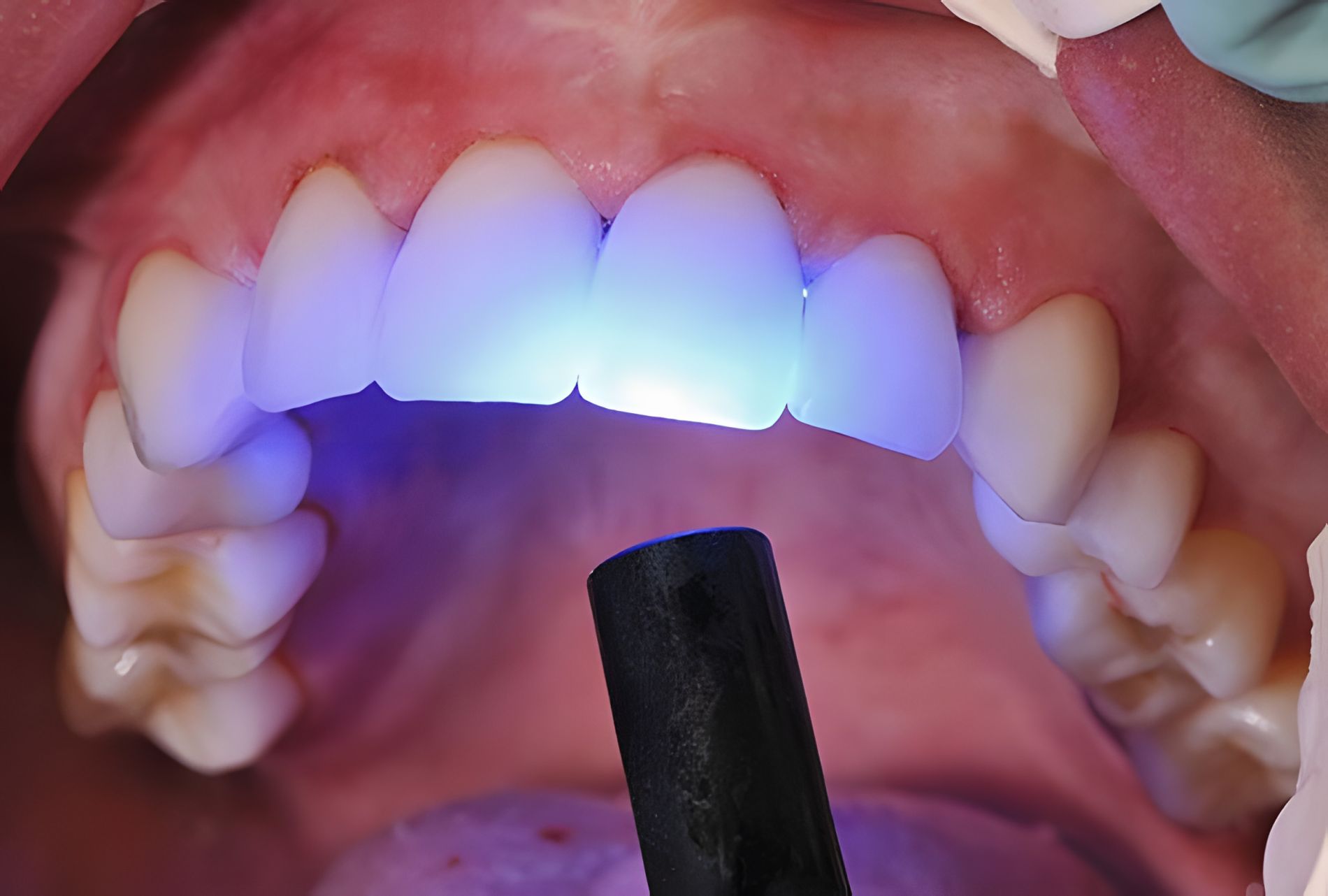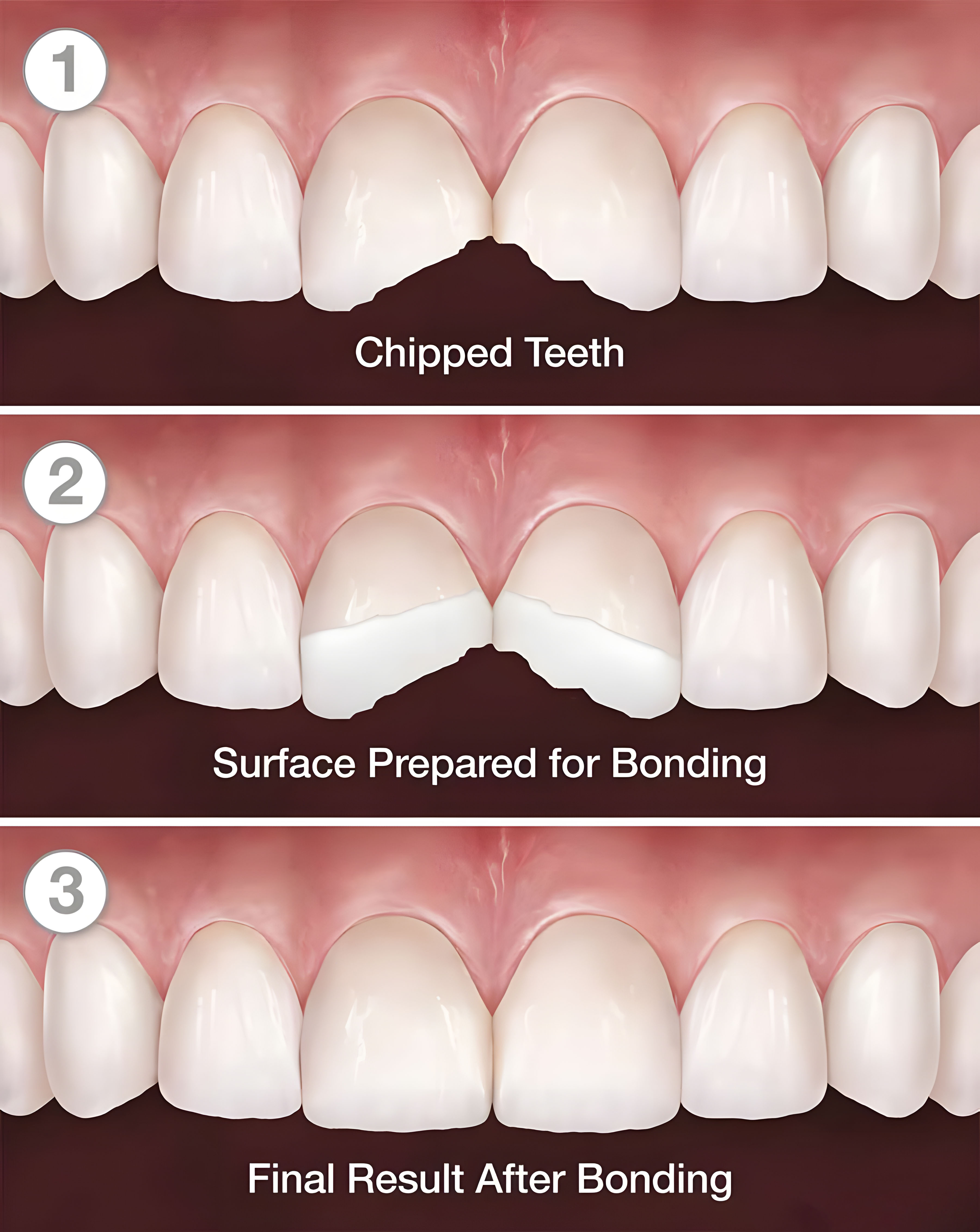Inleiding
Als u uw glimlach wilt verbeteren, bent u misschien de term composiet-bonding tegengekomen. Dit is een tandheelkundige behandeling die onder meer afgebroken, gebarsten of verkleurde tanden kan corrigeren. Composiet-bonding is een minimaal invasieve en kosteneffectieve manier om het uiterlijk van uw tanden te verbeteren. Maar wat is het precies? In dit artikel leest u alles over composiet-bonding: de voordelen en risicos, het verloop van de behandeling en de nazorg.
Wat is composiet-bonding?

Composiet-bonding is een esthetische tandheelkundige behandeling waarbij tandkleurig composiet (hars) wordt gebruikt om tanden te hervormen of te herstellen. De relatief eenvoudige en snelle procedure kan doorgaans in één afspraak worden uitgevoerd. Het materiaal, een mengsel van kunststof en glas, wordt laag voor laag aangebracht en met een speciaal licht uitgehard. Vervolgens modelleert en polijst de tandarts het composiet zodat vorm en kleur aansluiten bij de omringende tanden.
Composiet-bonding kan worden ingezet voor onder meer:
- Barstjes of afgebroken randen
- Verkleurde of bevlekte tanden
- Onregelmatige tanden
- Spleetjes tussen de tanden
- Misvormde tanden
- Tanden met cariës
Voordelen van composiet-bonding
Composiet-bonding biedt verschillende voordelen. Enkele daarvan:
- Minimaal invasief: In tegenstelling tot bijvoorbeeld facings is er doorgaans geen of nauwelijks slijpen van glazuur nodig.
- Snel: Vaak in één afspraak te voltooien, meestal binnen een uur.
- Kostenefficiënt: In vergelijking met andere esthetische behandelingen relatief betaalbaar.
- Esthetisch: Tandkleurig composiet oogt natuurlijk en gaat op in het gebit.
- Veelzijdig: Geschikt voor de hierboven genoemde indicaties.

Risicos van composiet-bonding
De behandeling is veilig en over het algemeen laag-risico, maar let op het volgende:
- Gevoeligheid: Tijdelijke gevoeligheid voor warm/koud kan na afloop optreden en verdwijnt meestal binnen enkele dagen.
- Verkleuring: Composiet kan na verloop van tijd verkleuren. Beperk sterk kleurende dranken/voeding zoals koffie, thee en rode wijn.
- Afsplinteren/breuk: Composiet is minder hard dan glazuur en kan bij overbelasting afsplinteren.
- Cariësrisico: Bij onvoldoende mondhygiëne kan onder de restauratie cariës ontstaan.
De composiet-bonding procedure
Nu u de voordelen en risicos kent, volgt hier het gebruikelijke verloop:
Stap 1: Consult
Plan een consult om te beoordelen of composiet-bonding geschikt is. De tandarts onderzoekt uw gebit en bespreekt uw doelen en verwachtingen.
Stap 2: Voorbereiding
Bij doorgang worden de tanden gereinigd en wordt het te behandelen oppervlak licht opgeruwd. Dit bevordert de hechting van het composiet.
Stap 3: Aanbrengen van het composiet
Het materiaal wordt in lagen aangebracht; iedere laag wordt met licht uitgehard. Daarna wordt het composiet gemodelleerd tot de gewenste vorm en kleur.
Stap 4: Polijsten
Na het aanbrengen en vormen volgt de uitharding (polymerisatie) met licht (meestal 3060 seconden). Tot slot wordt het oppervlak naar hoogglans gepolijst.
Conclusie
Composiet-bonding is een veelzijdige en effectieve esthetische behandeling om het aanzicht van uw tanden te verbeteren. Het is een betaalbaar alternatief voor andere cosmetische opties en kan vaak in één afspraak. Met goede verzorging gaat het resultaat meerdere jaren mee en helpt het u aan de glimlach die u wenst. Bespreek met uw tandarts of composiet-bonding voor u de juiste keuze is.
Veelgestelde vragen (FAQ)
Wat is composiet bonding?
Composiet bonding is een minimaal invasieve tandheelkundige behandeling om het uiterlijk van aangetaste, afgebroken, gebarsten of verkleurde voortanden te verbeteren. Er wordt een tandkleurig composiet (hars) gebruikt om de bestaande tanden te hervormen of de kleur te verbeteren.
Wat zijn de voordelen van composiet bonding?
De behandeling is veilig, betrouwbaar en pijnloos; er hoeft geen tandweefsel te worden verwijderd (tenzij er cariës aanwezig is) en in de regel zijn boren of verdoving niet nodig.
Hoe wordt composiet bonding uitgevoerd?
Composiet bonding verloopt in 8 stappen: klinisch onderzoek, indien nodig lokale verdoving, opruwen van het oppervlak, indien nodig vormgeving, coaten, aanbrengen van de hechtlaag, uitharden en vervolgens afwerken en polijsten.
Is composiet bonding pijnlijk?
Nee. Zolang er geen diepe cariës betrokken is, is composiet bonding volledig pijnloos.
Moet er tandweefsel worden verwijderd voor composiet bonding?
Nee. Tenzij er sprake is van cariës, hoeft er geen tandweefsel te worden verwijderd.







